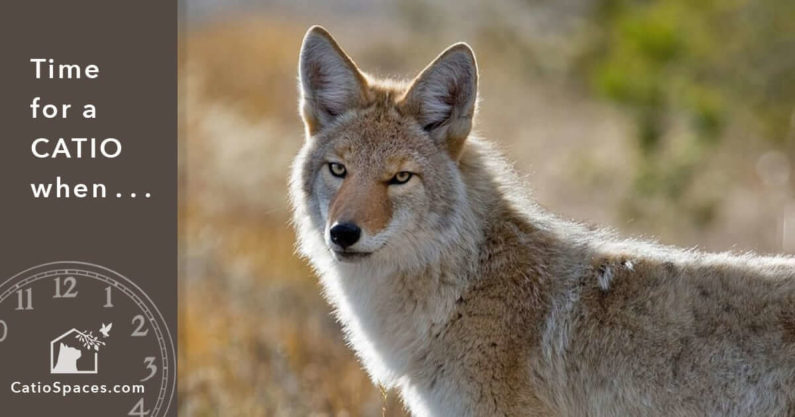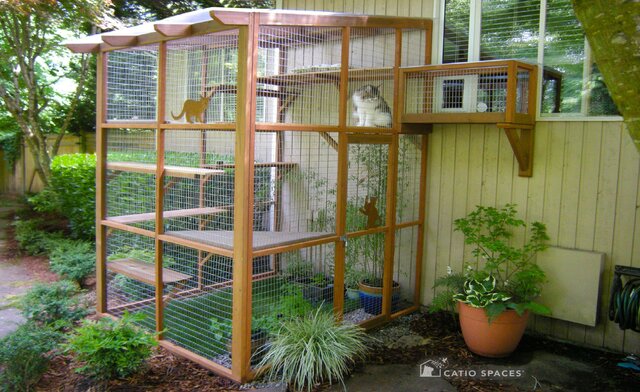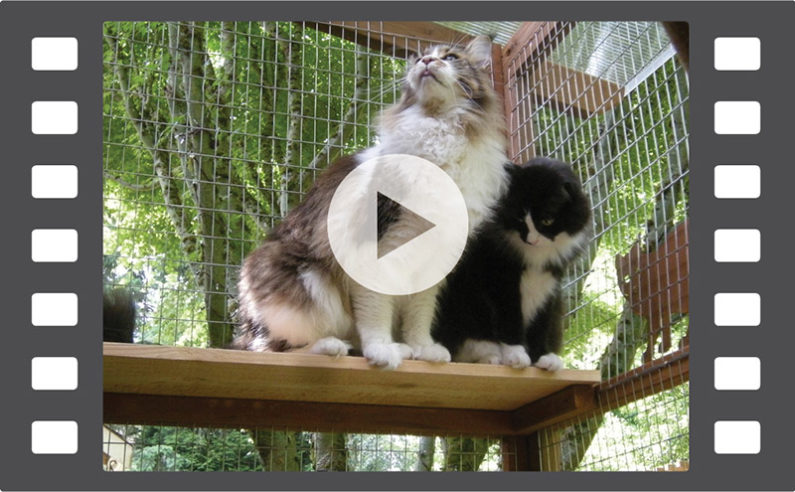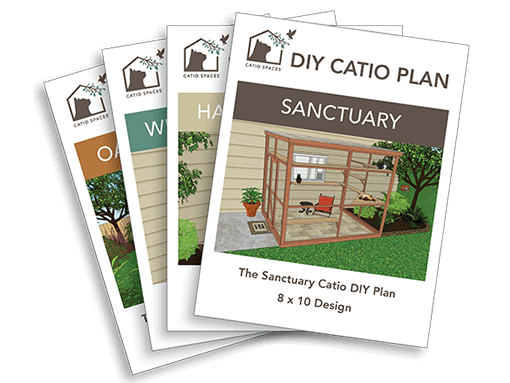
It’s a fact of life for most North Americans—coyotes and other animals that prey on small mammals are nearby. Just because you haven’t seen a coyote in your neighborhood doesn’t mean they aren’t there. In fact, coyote sightings in New York City itself are on the rise! The coyote population is spread across the entire U.S. and they have been spotted in both urban and rural spaces.
Coyotes live virtually everywhere and, through no fault of their own, can pose a serious risk to cats allowed outside. Even in urban landscapes where coyotes prefer to live in wooded areas or parks, they are opportunistic and will go for a meal in residential areas if they spot one.
“Coyotes are opportunistic omnivores and will take advantage of food resources in their territory, including cats, says Camilla Fox, founder and executive director of Project Coyote, a national non-profit organization working to promote compassionate conservation and coexistence between people and wildlife. “Just as it’s in a cat’s nature to want to be outside and hunt for rodents, birds and other prey, it’s in a coyote’s nature to also forage and hunt for food. Unfortunately, an unprotected cat can equal a great meal for a hungry coyote.”
So what will protect an outdoor-loving cat?
As cat parents try to safely satisfy their cat’s urge for enrichment and access to the outdoors, it’s important to know that not all catios or cat enclosures are created equal. Here at Catio Spaces, I’ve put a lot of work into recommending and using materials for our DIY catio plans that can withstand a hungry coyote’s advances.
Let’s take a look at a few tips to ensure your catio is coyote-safe:

1. Be sure to use fencing wire that can keep a coyote out.
Don’t use plastic mesh or standard window screen material in your catio. These kinds of materials can be all-too-easy for a hungry coyote to get through for an easy meal.
In both our DIY catio plans and custom catio designs, we recommend using 16-gauge fencing wire with no more than 2”x3″ grid openings. This wire is much stronger than chicken wire (which ranges from 19-22 gauge) and it’s easier to cut.
Our recommended fencing wire is also unlikely to leave sharp edges where you make cuts, keeping you and your kitty from some potentially nasty wounds.
16 gauge fencing wire is easy to staple securely onto wood catio frames, keeping your cat safe and safely away from both coyotes and other small predators. If you need a little guidance on finding the right enclosure mesh for your catio, read this blog for more tips. Remember, if your cat can create a hole in your fencing materials, a coyote absolutely can.
2. Coyotes can dig, so check around your catio enclosure regularly for signs of holes.
Coyotes are a part of the canine family and can do everything a dog can do, including digging under fences.
If your catio sits on dirt, you may want to consider a layer of mesh flooring below the base frame and have some perching areas your cat can escape to if needed. Another option may be adding pavers or a decking floor to the catio to stop coyotes from being able to dig under the catio walls.
3. Consider all potential entry points.
Be sure to use a sturdy wire and consider all potential entry points: sides, above, and below the catio. Consider all the ways a predator may attempt to enter and make sure they can’t. Coyotes are smart, but other small predators like hawks and eagles can also take advantage of a roofless catio, so be sure to consider a wire mesh or polycarbonate roof to avoid a potential aerial entry.
4. Give your catio a regular maintenance check.
You’ll want to ensure everything is properly secured for an escape-proof space. Inclement weather or some other event could cause damage that needs to be remedied. Never let your cat into an unsecured catio. They become a higher risk to escape, get lost, or be harmed – or they can harm birds and other wildlife.
5. Consider adding predator deterrents in your backyard.
While a properly built catio is perfectly safe for your cat, if you want added protection, a motion sensor sprinkler or coyote roller for your fence can provide that extra peace of mind.
Catios are such a great way to enrich your cat’s life and we want to make sure they are always safe. To learn more about coyote-proof catios, download one of our award-winning DIY catio plans for a window, porch, patio, deck or yard.
And be sure to check out this video of two coyote-safe cats, Carter and Bandit, enjoying their catio:

Stay safe out there, and as always, life is good in a catio!

 Cynthia Chomos is a
Cynthia Chomos is a 
